San Elijo Lagoon Inlet Facing Possible Closure
Follow ( 0 Followers ) X Follow E-mail : * Follow Unfollow
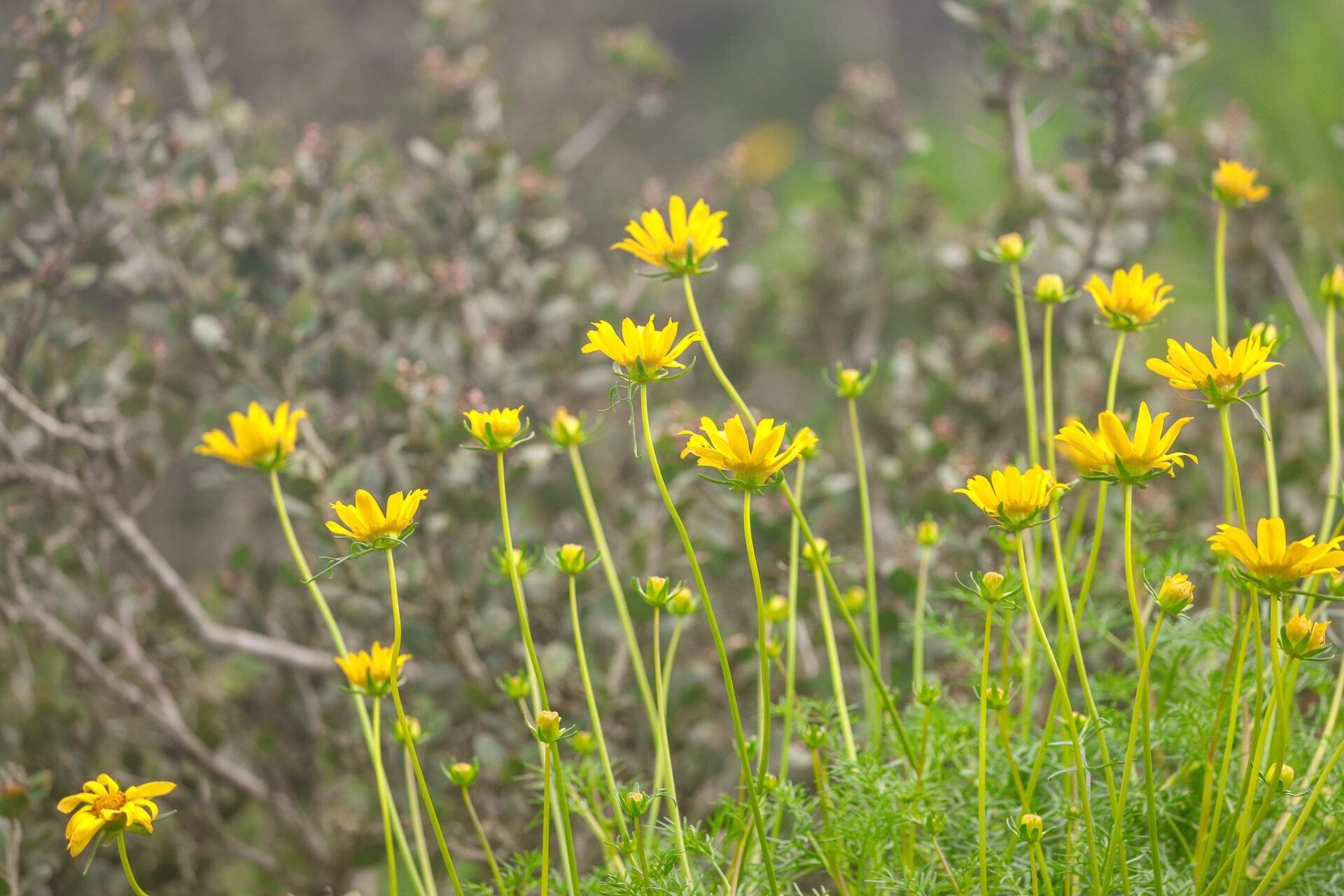
Get ready for an explosion of color at San Elijo Lagoon! Spot the rare sea dahlia (Leptosyne maritima), one of the most enchanting spring-blooming perennials, with its sunny yellow, daisy-like petals dancing above lush, fern-like leaves. These beauties love the steep sandy slopes by the ocean, an environment that’s sadly dwindling rapidly.
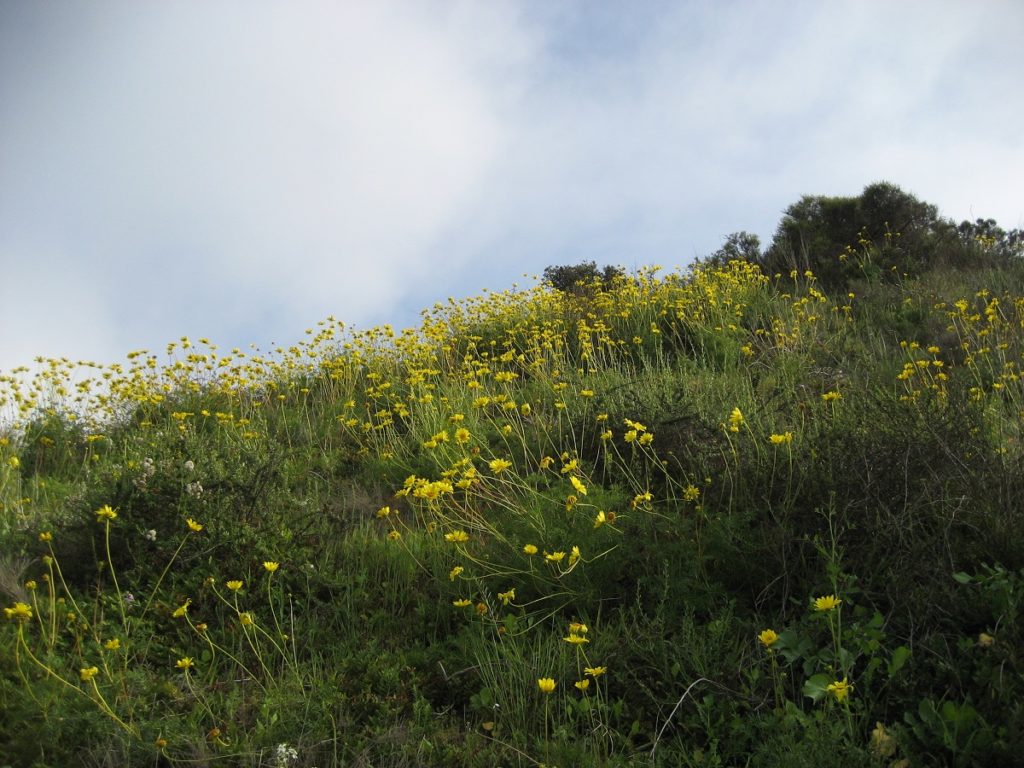 Above: Sea dahlias
Above: Sea dahlias
But there’s a silver lining! Thanks to Nature Collective’s restoration initiatives, including the recent planting of over eight hundred native plants, including twenty-six unique species, the endangered sea dahlia is thriving!
The 5-acre restoration area is nestled within coastal sage scrub and chaparral vegetation communities along the Rios Trail. These unique vegetation communities within San Elijo Lagoon Ecological Reserve are home to scattered patches of dense annual native forbs, colorful spring wildflower displays of the cheerful California sun cup (Camissoniopsis bistorta), the charming and iconic California poppy (Eschscholzia californica), the purple and white flowers of Chinese houses (Collinsia heterophylla), and many more.
Join the adventure along the San Elijo Lagoon Rios Trail and immerse yourself in a kaleidoscope of stunning blooms happening now! When taking in the splendor, take your photos from the trail because footprints compact and drift soil away from the plants, weakening their foundation. Also, many bird species nest low on the ground. Moving through their habitat can be very destructive and hurt biodiversity.
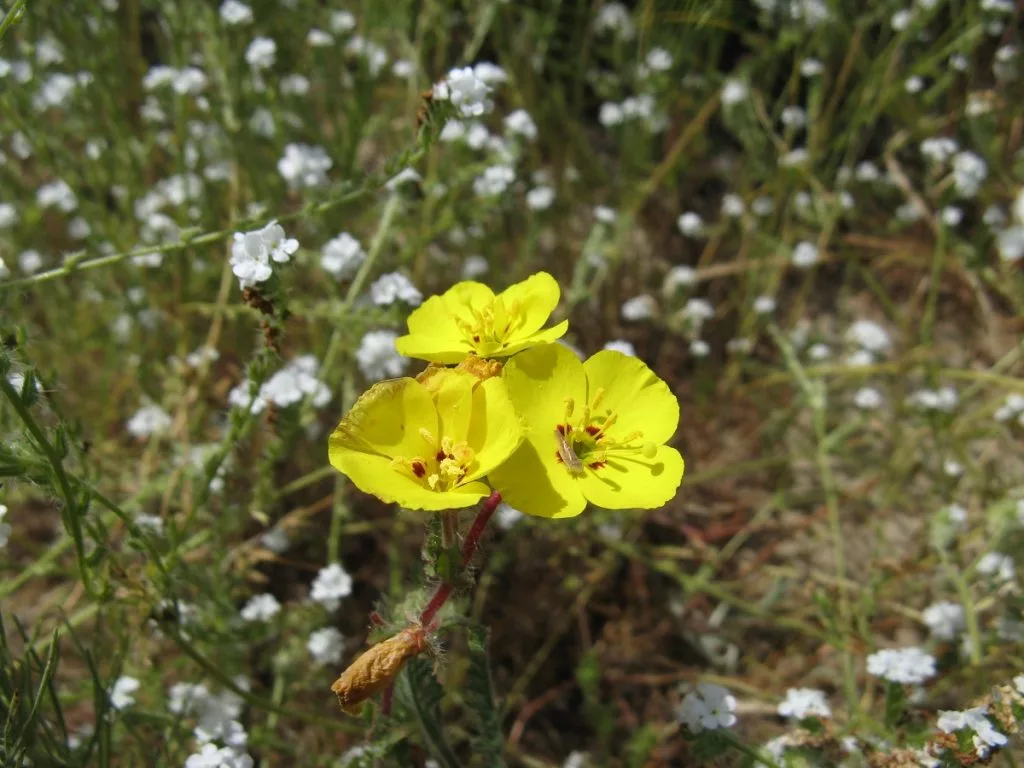 Above: California suncup, day-bloomers that are pollinated at night
Above: California suncup, day-bloomers that are pollinated at night
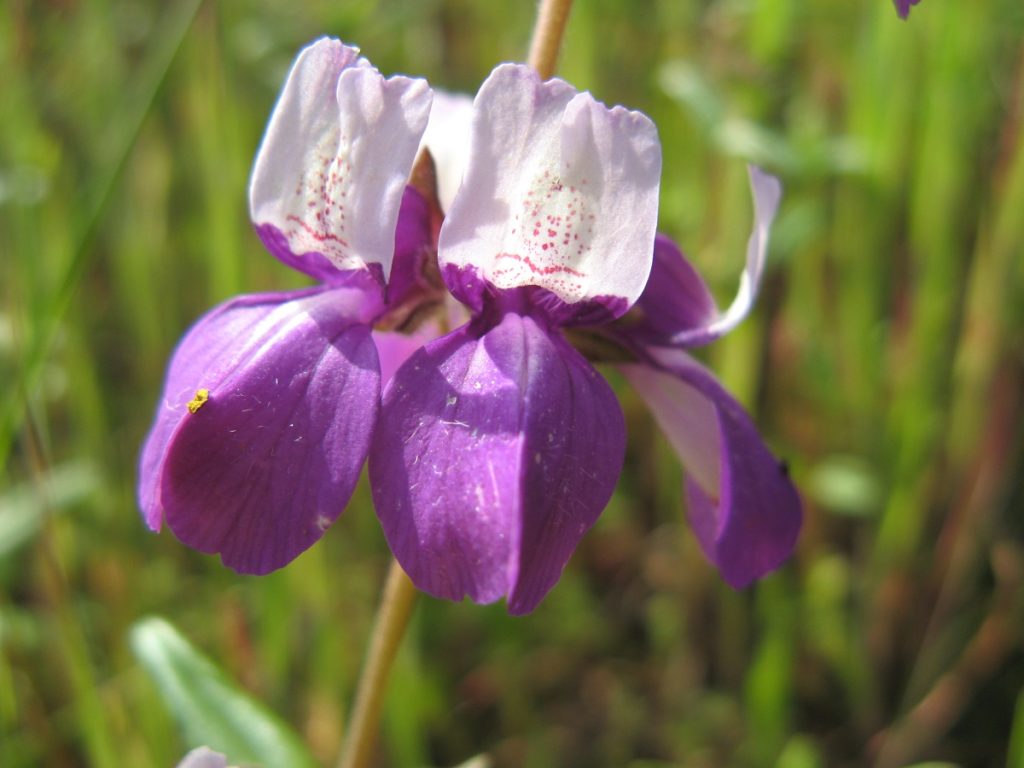 Above: Chinese houses produce adorable, pagoda-like flowers
Above: Chinese houses produce adorable, pagoda-like flowers
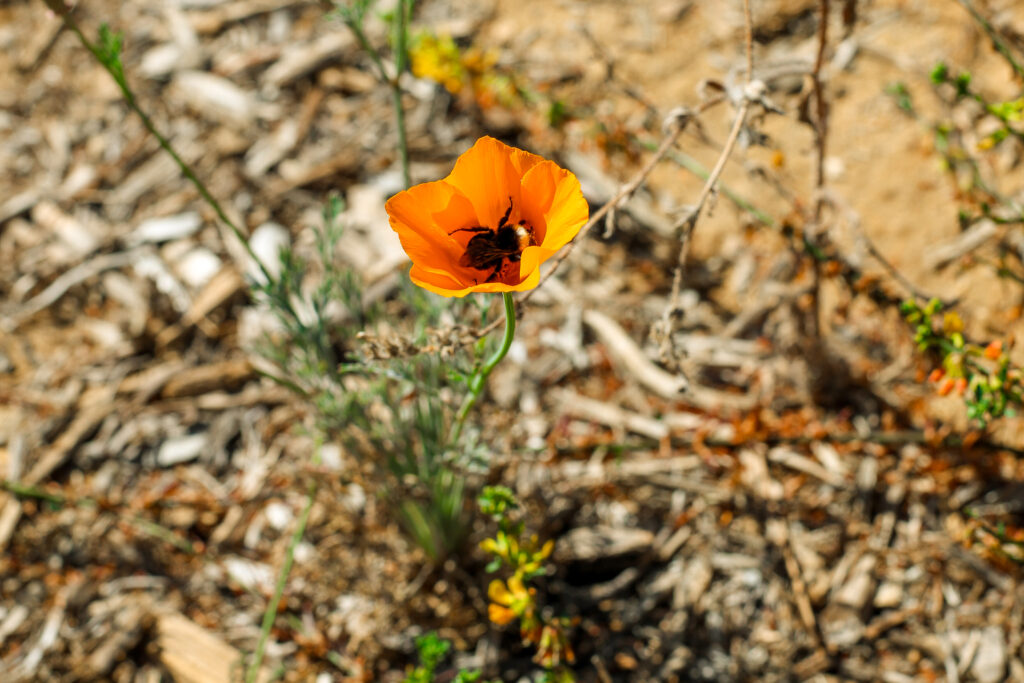 Above: California poppy, the state flower of California
Above: California poppy, the state flower of California
The endangered California Gnatcatcher, Southern mule deer, and various reptiles, including the Southern Pacific rattlesnake, call this unique area of San Elijo Lagoon home. These animals, and many more, rely on this unique habitat and biodiversity to survive.
Before our restoration efforts began, this area was heavily infested with perennial veldt grass (Ehrharta calycina) and ice plant (Carpobrotus edulis).
Veldt grass, originally imported to California for use as a pasture grass and for erosion control, has proven to be a destructive force. It displaces native vegetation and converts coastal scrub and chaparral communities to grasslands, threatening the delicate balance of this ecosystem.
Introduced as an ornamental plant, the ice plant now inhabits coastal scrub, grasslands, chaparral, bluffs, dunes, and beaches. It creates thick, dense mats that alter the soil composition, allowing new non-native species to invade. The ice plant propagates very easily; even small stem fragments can regenerate into a new plant, making it difficult to control.
This restoration project, crucial for the preservation of our local environment, is made possible due to the San Diego Association of Governments’ (SANDAG) Environmental Mitigation Program. This program, funded by Transnet, the half-cent sales tax approved by voters in 1988, is a testament to our collective commitment to protect, preserve, and restore native habitats and offset disturbances caused by the construction of regional and local transportation projects.
Please consider donating if you’d like to support Nature Collective. Donate Today!
Follow ( 0 Followers ) X Follow E-mail : * Follow Unfollow
Follow ( 0 Followers ) X Follow E-mail : * Follow Unfollow